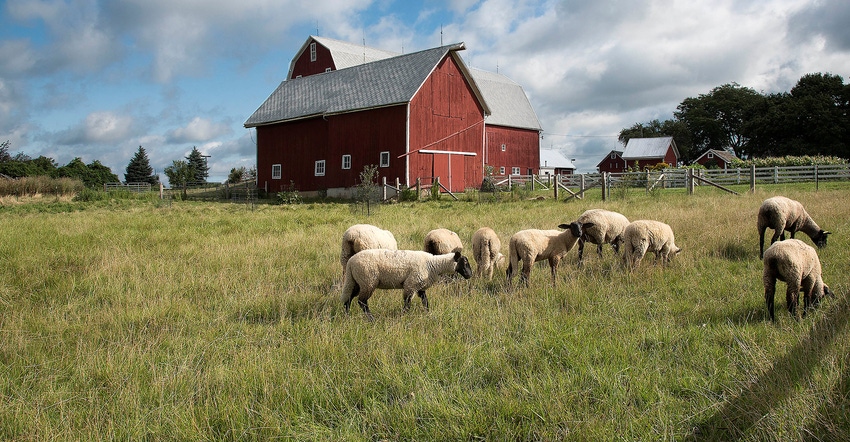January 23, 2018

Every barn has a story, and if this barn could talk, it would have fascinating things to say. Most impressive is that it was built well over a century ago and has been a working barn all that time — except when it was moved. But we’re getting ahead of ourselves.
Known by the name of its owner, this barn is called the Rentschler Barn at 1265 E. Michigan Ave. in Saline, Mich. Its exact date of construction is not known, but what is known is that it stands on land purchased in 1825 by John Gilbert, an Army officer from Massachusetts.
Gilbert later sold to Thomas Tate, then to John Tate and in 1901 to Emanuel Rentschler. The land was next owned and farmed by son Herman and then grandson Warren Rentschler. Today, it is owned and operated by the City of Saline as a working historical farm.
Originally, the barn stood near the old Chicago Road, relates Agnes Dikeman, farm administrator for the Saline Area Historical Society. But when Emanuel Rentschler bought the farm he feared that a cigarette carelessly tossed from a train on the too-close Ypsilanti-Saline Interurban railroad might spell doom for the barn. Emanuel decided to turn the barn parallel to the road and move it back, creating a barnyard between barn and railroad. This was no small feat given the barn is 76 feet in length. It is also no easy undertaking, because the move was made by three teams of horses working in perfect unison after the barn was jacked up, rollers placed beneath it and bracing added for security.
After the barn was repositioned, another 20 feet of space for horses was built onto the east end — this after stone for the lower walls was brought in from another township using a gravel wagon, horse and manpower. Again, this was no easy feat, because only one man driving horse and wagon made the 16-mile round trip, hauling stone every day throughout a long winter until enough stone had been gathered to put a new foundation under the big barn.
In addition, the original gable roof was replaced by a gambrel roof, which added mow space for hay. Hemlock siding replaced old siding and, with care, remains in good condition today.
Dikeman points out that one of the features of this grand barn is that the original timbers are hand-hewn and are from Michigan’s virgin forests. They are 12 by 14 inches in size and 36 feet long as solid, pegged beams. With the 20-foot addition to the barn, it is now 96 feet in length, with the west end roof being 45 feet to the peak. Work to enlarge the barn was done by Matthew Rentschler, Emanuel’s brother, a building contractor.
Warren and his wife, Marilyn, retired from farming in 1998, at which time the 240-acre farm was broken and sold in several pieces. The City of Saline purchased the 4 acres, which includes the farmhouse and its outbuildings.
While the original plan was to create a welcome center on the site, wisdom prevailed and today, under the leadership of the Saline Area Historical Society, it is a farm museum that honors the area’s farming history and welcomes visitors from near and far.
The outbuildings include a workshop, hog house, large equipment barn, chicken house, corn crib, small equipment barn, the milk house, the salvage barn, ice house and the main barn, which the upper portion was used for threshing and hay storage, while the lower section housed dairy cattle and sheep.
The west end of the lower barn today shelters sheep during the summer when the farmstead is open. The middle section of the barn, where some 20 cattle were once milked, and an attached milk house, reveal how dairying changed over the years.
Other sections of the barn clearly show the importance of a drive-in mow, the purpose of a threshing floor and the reasons for specific positioning of grain bins, trap doors and chutes.
“The Rentschler family was known for carefully maintaining their farmstead,” Dikeman says. “We have continued to do that.”
The farm museum and its gift shop are open on Saturdays from May through September from 11 a.m. to 3 p.m. with special events drawing thousands of visitors. In 2018, special dates are the “US-12 Statewide Yard Sale” Aug.10-11; “Harvest Time” Oct. 7, and “Christmas,” Dec. 8, 15 and 16. For more information on events and hours go to salinehistory.org.
Arnett writes from Battle Creek.
About the Author(s)
You May Also Like




